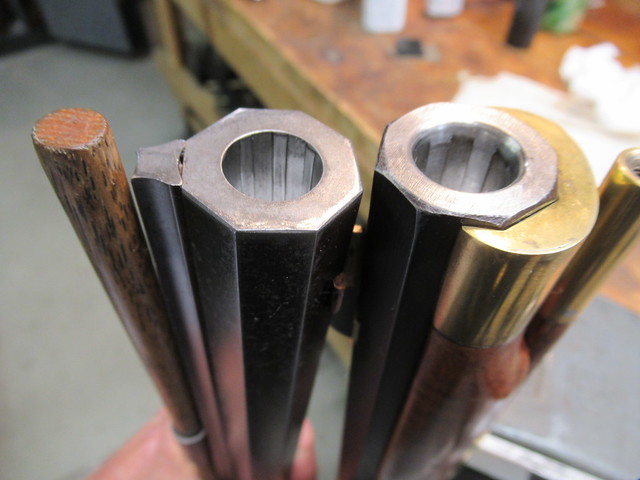Before I begin, please allow me to say that whether or not someone wishes to use coning on their muzzle is completely up to them.
However, as to historical use or absence thereof, if one believes something close to modern coning was done, then I ask where is the evidence?
One would expect that if coning was popular in the 19th century, when the technology of the Industrial Revolution would have made it much easier for riflesmiths to accomplish, then there should be plenty of original percussion half stock rifles that have coned muzzles. OK, so where are they? Further, if it was deemed advantageous, then it would have been done after the rifling was "refreshed" and/or the bore opened up to a larger caliber. So again, where is the evidence? Unlike 18th century American made rifles, there is a much, MUCH larger quantity of these rifles extant and such coning should be easy to document.
In the 18th century and especially during the AWI when the advantage if not need to have coned muzzles for extended fast reloading for combat, what evidence do we have of what they actually did to really speed up loading? What is most often historically documented is after the barrels got too fouled to easily load a PRB, they usually shot bare balls. There is a very tiny amount of documentation they used smaller diameter balls after the barrel became fouled, but not much documentation. After all, that would have required either a Rifleman having a second mold or been just lucky that someone else's mold was just the right size for his rifle. In the days of everything having been handmade and NO precision measuring instruments, no wonder there is so little documentation of using smaller balls as a battle went on.
OK, so where is the documentation of the tools that 18th century gunsmiths used to "cone" muzzles as deeply as is done in modern times? I'm completely open to evidence showing such tools were available and used, but there is absolutely no evidence I know of to support that theory; either by original tools or letters, or diaries, or log books or probate inventories.
As I mentioned earlier, there IS evidence on some 18th century rifles where they hand filed rounded edges into both the lands and grooves of the rifling, but that is nothing like modern coning.
For living history and trying to be HC/PC, then modern theories are not enough to validate what was done in the period without supporting evidence.
Again, not trying to say folks should not have it done to their modern replica rifles if they prefer, but there really is no evidence of any kind that coning as we know it today was done in the period.
Gus





 IMG_0421
IMG_0421